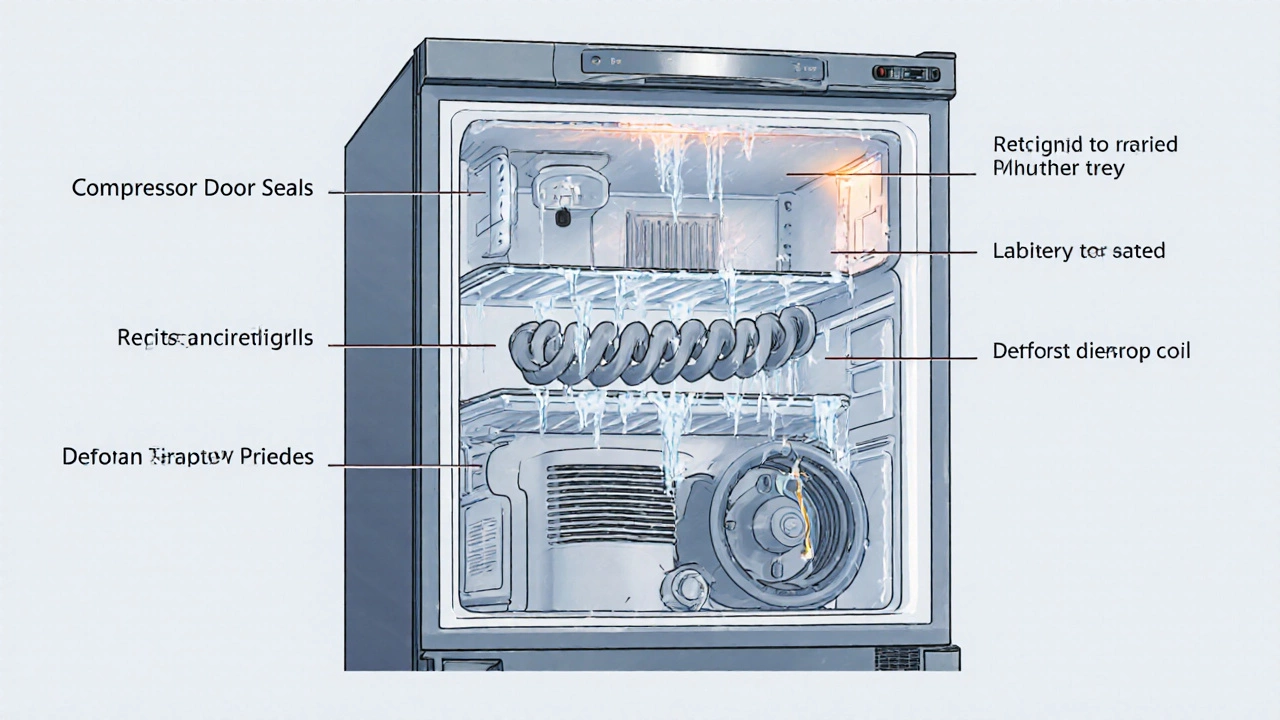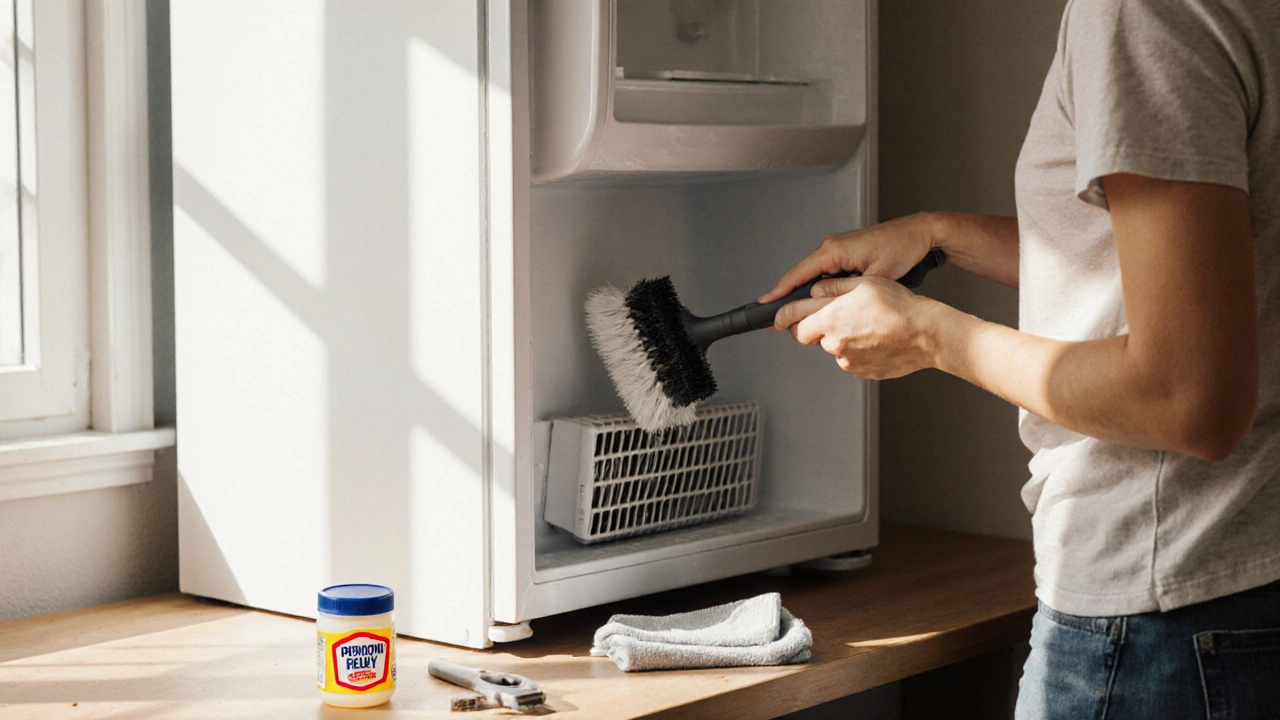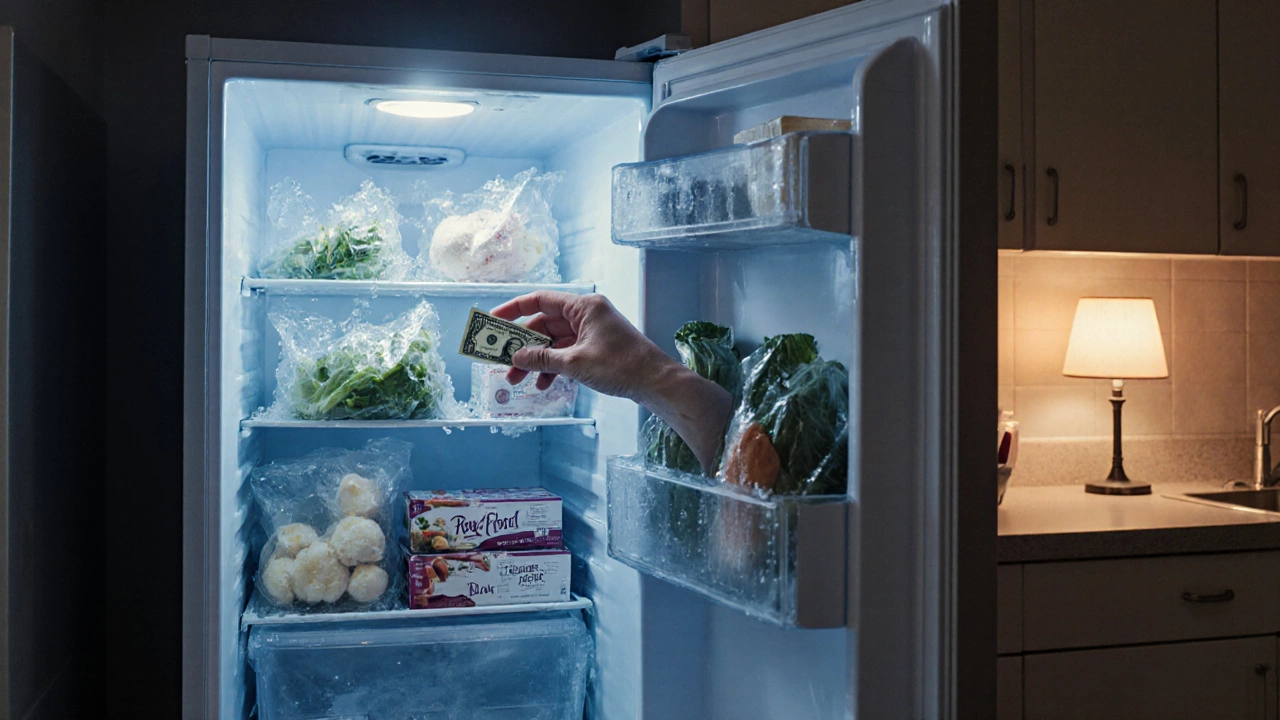Freezer Diagnosis Tool
Check Your Symptoms
Select all symptoms you're experiencing
When your food starts to melt in the freezer or the unit hums louder than usual, you wonder if the appliance has finally given up. Knowing the exact signs of a failing Freezer is a a large, insulated appliance that keeps items frozen at 0°F (-18°C) or lower can save you a trip to the repair shop and keep your groceries safe.
Red Flags That Your Freezer Is on the Fritz
- Food isn’t staying frozen or is developing ice crystals.
- Frost buildup inside the freezer walls, even on a frost‑free model.
- Unusual noises - buzzing, clicking, or rattling that wasn’t there before.
- Excessive warm air blowing from the vents.
- The freezer cycles on and off quickly, never staying on long enough to reach the set temperature.
If you notice any of these, it’s time to start digging into the cause.
What Usually Breaks Inside a Freezer?
The most common culprits are a few key components. Understanding what each does helps you pinpoint the problem.
Compressor is the the heart of the refrigeration cycle that pressurizes refrigerant and powers the cooling process. If it fails, the whole system stops cooling.
Thermostat electronic sensor that tells the compressor when to turn on or off based on the interior temperature can go bad, causing constant cycling or no cycling at all.
Door Seal rubber gasket that creates an airtight barrier around the freezer door may crack or lose its tension, letting warm air in.
Evaporator Coil a network of tubes that absorbs heat from the freezer compartment as refrigerant evaporates can freeze over, blocking airflow.
Defrost Timer controls the automatic defrost cycle on frost‑free units may stop the coil from defrosting, leading to ice buildup.
Refrigerant the chemical fluid (often R134a or R600a) that circulates through the system to carry heat away can leak, reducing cooling efficiency.
Step‑by‑Step Diagnosis - DIY Checklist
- Check the Power. Verify the freezer is plugged in and the outlet works. Test the outlet with a lamp or multimeter.
- Inspect the Door Seal. Close a dollar bill in the door; if it slides out easily, the seal is compromised. Look for cracks, tears, or debris.
- Listen for the Compressor. A healthy compressor emits a low humming sound. If it’s silent or makes a clicking clank, it may be seized.
- Measure the Temperature. Place a freezer‑grade thermometer inside. Readings above 5°F (‑15°C) indicate a cooling issue.
- Look for Frost Buildup. If the walls are coated with a thick layer of ice, the defrost timer or thermostat could be at fault.
- Feel the Evaporator Coils. If visible, they should be cold to the touch. Warm coils point to poor refrigerant flow.
- Run a Reset. Unplug the unit for five minutes, then plug it back in. Many electronic controls need a hard reset.
If the freezer still isn’t doing its job after these steps, you’ve likely narrowed down the failing part.

Quick Fixes You Can Try Before Calling a Pro
- Seal the Door. Clean the gasket with warm soapy water, then apply a thin coat of petroleum jelly to improve flexibility.
- Defrost Manually. Turn the freezer off, leave the door open, and let the ice melt. Clean up excess water and restart.
- Clean the Condenser Coils. Vacuum or brush dust from the coils located at the back or beneath the freezer. Better airflow helps the compressor work.
- Replace a Bad Thermostat. On many models, the thermostat is a simple dial you can order from the manufacturer and swap in 10 minutes.
These fixes address the most frequent, low‑cost problems. If nothing changes, it’s time to bring in a qualified repair technician.
When to Call a Professional
Even with the best DIY effort, some issues need trained hands:
- The compressor is humming loudly or not turning on at all.
- You suspect a refrigerant leak - handling refrigerants requires certification.
- The defrost timer or electronic control board appears damaged.
- Multiple components are failing, indicating underlying electrical issues.
Professional repair typically costs between $150 and $300, depending on parts and labor. Compare quotes and ask if the repair is worth it versus replacing the unit, especially for older models.

Preventive Maintenance - Keep Your Freezer Healthy
- Schedule a quarterly cleaning of the condenser coils.
- Check the door seal monthly and wipe it clean.
- Leave space around the freezer for proper ventilation.
- Defrost manually if you notice ice buildup, even on frost‑free models.
- Set the temperature to 0°F (‑18°C) - lower settings waste energy and stress components.
Following these habits reduces the chance of a sudden breakdown and extends the appliance’s lifespan.
FAQ - Common Questions About a Broken Freezer
Why is my freezer making a loud buzzing noise?
A buzzing sound often means the compressor is struggling to start. It could be a failing start relay, low voltage, or a worn‑out compressor. Resetting the unit may help, but if the noise persists, replace the component.
My freezer stays at 10°F - is that a problem?
Yes. Freezers should stay at 0°F (‑18°C) or lower. Temperatures above 5°F indicate insufficient cooling, usually caused by a faulty thermostat, low refrigerant, or blocked airflow.
How often should I clean the condenser coils?
Ideally every three months, or more often if the freezer sits in a dusty garage. Clean coils improve efficiency and reduce compressor wear.
Can I fix a refrigerant leak myself?
No. Handling refrigerants requires EPA certification. Attempting a DIY fix can be illegal and dangerous. Call a licensed technician to locate and repair the leak and recharge the system.
Is it cheaper to repair or replace my freezer?
If the repair cost is less than half the price of a new, energy‑efficient model, repair usually makes sense. For major component failures in units older than 10 years, replacement often offers better long‑term savings.
Spotting the warning signs early and following the diagnostic steps above can save you time, money, and the hassle of spoiled food. The next time your freezer looks like it’s on the fritz, you’ll know exactly what to check and when to call in an expert.

